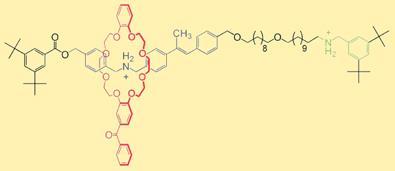Thermodynamic puzzle inspires molecular machine.
Inspired by a 140-year-old conundrum, chemists have created a nanomachine that works like a ratchet, transporting molecules in only one direction. The device is unusual because it drives the molecules away from their thermodynamic equilibrium, proving that artificial devices can mimic the sophisticated biochemical machinery in every living cell.
David Leigh and his team of chemists at Edinburgh University, UK, developed their light-driven molecular motor to perform a task that was first imagined by physicist James Clerk Maxwell in 1867. He suggested a way to apparently violate the second law of thermodynamics, which insists that heat cannot flow spontaneously from a cold material to a hotter material, and that any system will naturally tend towards greater disorder. Maxwell proposed that a cunning little demon might be able to make heat flow the ’wrong’ way by strategically opening and closing a gate between two boxes full of gas, so that one filled up hot, fast-moving molecules, and the other cold, slow molecules.
Crucially, Maxwell’s demon must open the gate without expending any energy - if it could do that, the system would move away from thermodynamic equilibrium. The proposal had scientists baffled, not least because one of the consequences was a promise of perpetual motion. But a better understanding of the link between information and entropy finally demonstrated the impossibility of this thermodynamic free lunch.
Driving any system away from equilibrium always requires the input of energy. For the Edinburgh team, this meant developing a light-activated nanomachine that can sort molecular fragments into two different ’boxes’.
The machine is a rotaxane structure, which consists of two components (see picture): a long dumbbell-shaped molecule (blocked at both ends), on which is threaded a large ring-shaped molecule (red) that can move back and forth between two different sites (blue and green) on the dumbell’s axis.

Part way along the axis is a chemical group - a stilbene - that acts as a light-activated gate. Normally kinked so that the ring is trapped at one end of the dumbbell, a blast of light will straighten out the stilbene and allow the ring to move to the other end of the dumbbell. Light-absorbing molecules in solution help to close the gate again once the ring has passed over it. This effectively separates the rotaxane into two compartments. The scientists monitored the ring’s precise position using NMR spectroscopy, and over time they found that more of the rotaxane’s rings ending up in the compartment furthest from the stilbene gate. ’It is as if Maxwell’s demon drives the whole system away from equilibrium.’ says Leigh. ’This is the first example of an "information ratchet" where there is a net signalled movement of particles in one direction only.’
Lionel Milgrom
References
V Serreli, et al, Nature, 2007, 445, 523






No comments yet